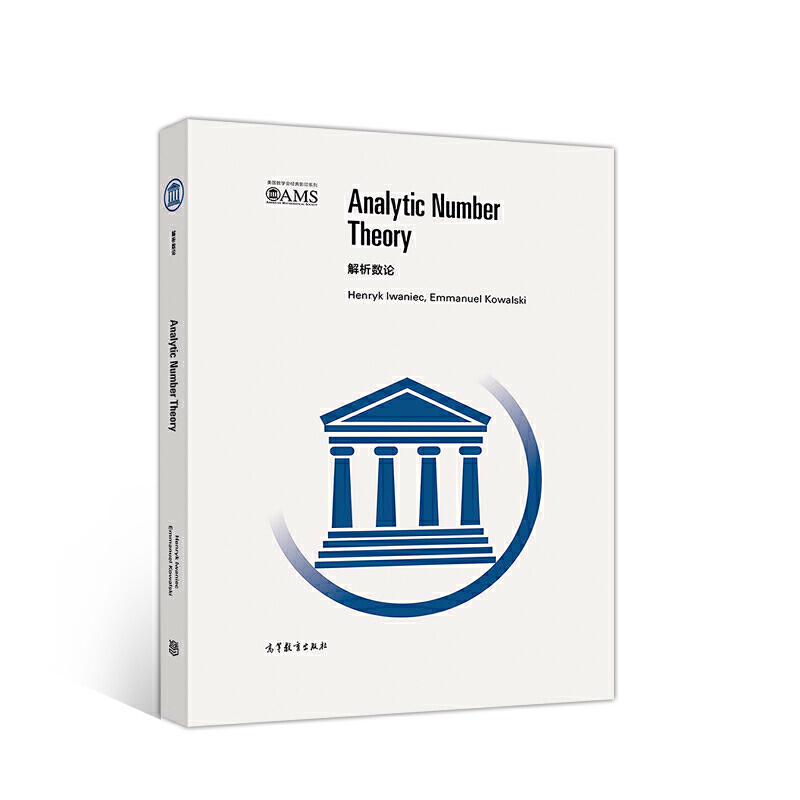
包邮美国数学会经典影印系列解析数论(影印版)

- ISBN:9787040517231
- 装帧:精装
- 册数:暂无
- 重量:暂无
- 开本:其他
- 页数:636
- 出版时间:2019-05-01
- 条形码:9787040517231 ; 978-7-04-051723-1
本书特色
解析数论的一大特点是能够利用多种工具获得所需的结果。这个理论的一个主要迷人之处是它的概念和方法的极大多样化。《解析数论(英文版)/美国数学会经典影印系列》的主要目的是呈现这个理论在经典和现代两个方向上的适用范围,并展示其丰富内涵和前景、漂亮的定理以及强有力的技术。
为了让研究生更好地阅读,作者很好地兼顾了叙述的清晰性、内容的完整性及知识的广度。每一节的习题都含有双重目的,一些题目用作增进读者对主题的理解,另外一些则提供了更多的信息。该书的主要内容所要求的预备知识仅限于微积分、复分析、积分学和傅里叶级数与傅里叶积分。后面一些章节中的自守形式很重要,学习它们所必需的大部分信息包含在两个概述章中。
《解析数论(英文版)/美国数学会经典影印系列》适合于对解析数论感兴趣的研究生阅读,也可供相关研究人员参考。
内容简介
解析数论的一大特点是能够利用多种工具获得所需的结果。这个理论的一个主要迷人之处是它的概念和方法的极大多样化。本书的主要目的是呈现这个理论在经典和现代两个方向上的适用范围,并展示其丰富内涵和前景、漂亮的定理以及强有力的技术。
为了让研究生更好地阅读,作者很好地兼顾了叙述的清晰性、内容的完整性及知识的广度。每一节的习题都含有双重目的,一些题目用作增进读者对主题的理解,另外一些则提供了更多的信息。本书的主要内容所要求的预备知识有且只有于微积分、复分析、积分学和傅里叶级数与傅里叶积分。后面一些章节中的自守形式很重要,学习它们所必需的大部分信息包含在两个概述章中。
本书适合于对解析数论感兴趣的研究生阅读,也可供相关研究人员参考。
目录
-

百年百部中国儿童文学经典书系·精选注音书:我是猪(彩绘版)
¥13.3¥25.0 -

普通高等教育“十三五”规划教材大学物理学习训练(下)/龚艳春
¥15.5¥21.0 -

农田清洁生产技术补偿的农户响应机制研究
¥38.7¥58.0 -

小麦滴灌节水增效新机理与水分优化管理
¥52.0¥68.0 -

高中数学题典精编(第一辑)—统计·概率·平面几何
¥34.8¥58.0 -

农田沟渠湿地水文过程模拟
¥22.3¥30.0 -

输电线路塔线系统力学分析与应用
¥115.5¥165.0 -

计算机系列教材大学信息技术基础教程(第2版)/安世虎
¥39.3¥59.0 -

复变函数与积分变换
¥18.0¥20.0 -

多种形式的农业适度规模经营研究
¥71.3¥95.0
-

13次时空穿梭之旅
¥18.7¥59.0 -

递归求解
¥9.4¥28.0 -

勒维特之星-大发现系列丛书
¥5.0¥16.0 -

核科学基本原理
¥14.5¥39.8 -

技术史入门
¥15.4¥48.0 -

天文学卷-异想天开-古今中外天文简史-《中国大百科全书》普及版
¥6.1¥19.0 -

科学哲学——科学家的视角
¥43.9¥78.0 -

发现之旅数的王国——世界共通的语言
¥41.1¥68.0 -

声音简史
¥23.9¥52.0 -

青少年及成.人普林斯顿数学分析读本
¥43.1¥69.0 -

130种美鸟彩图馆
¥15.3¥39.8 -

疯狂实验史-II
¥23.7¥36.0 -

控制论的发生与传播研究
¥6.0¥15.0 -

北宋科技思想研究纲要
¥9.8¥26.0 -

概率统计
¥5.7¥11.0 -

新科学时代的思考
¥46.2¥78.0 -

智慧宫029梦游者:西方宇宙观念的变迁
¥75.5¥128.0 -

现代生物特征识别技术
¥34.8¥49.0 -

羌塘盆地构造演化与油气生成和保存
¥229.0¥318.0 -

中国母乳营养成分地理分布图集(2024年)
¥58.2¥88.0











